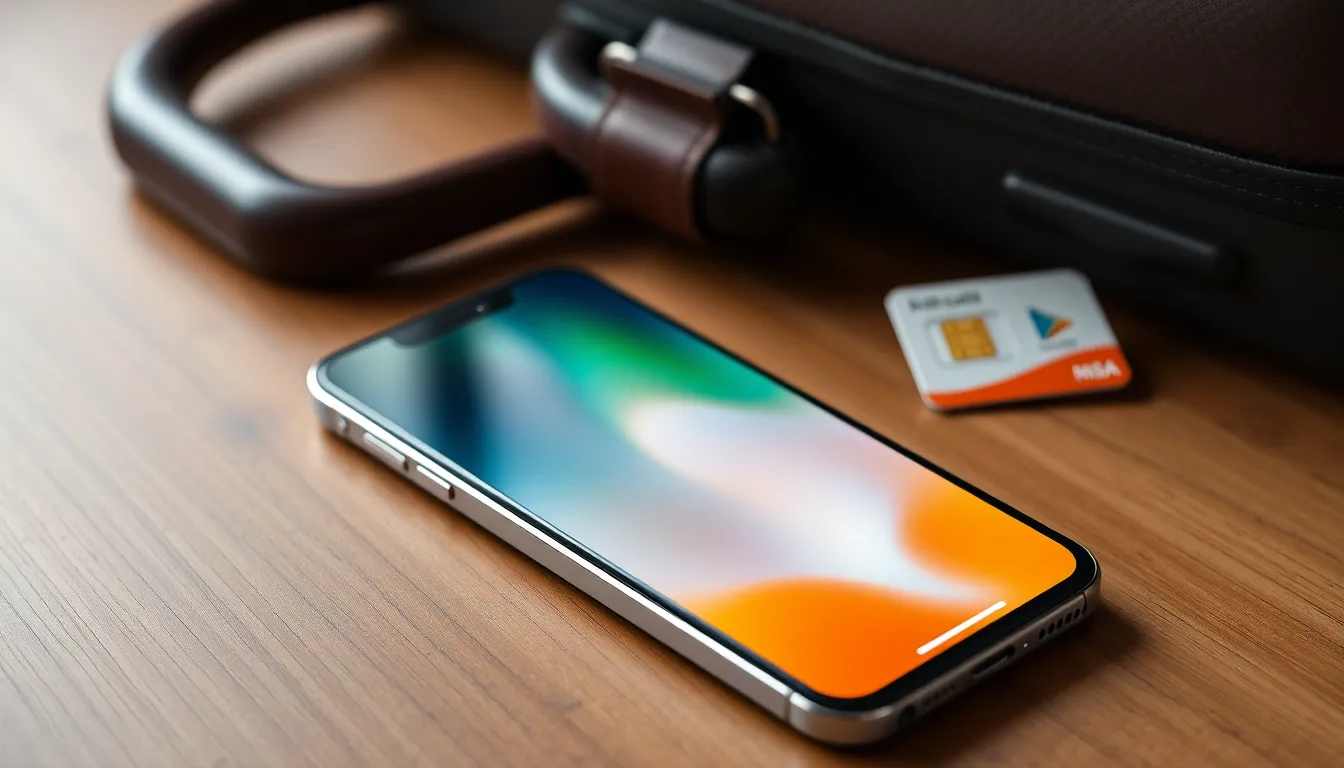Table of Contents
ToggleIn a world where smartphones are practically extensions of our bodies, the iPhone X stands out as a classic. But does it come with the latest tech bells and whistles? One question on many lips is whether this iconic device supports eSIM technology. Spoiler alert: it doesn’t.
While the iPhone X may not have the eSIM feature, it still packs a punch with its sleek design and powerful performance. If you’re considering an upgrade or just curious about what the iPhone X can do, understanding its capabilities can help you make an informed decision. So buckle up as we dive into the world of eSIMs and see what options are available for those who crave the latest in mobile technology.
Overview of eSIM Technology
eSIM technology, a revolutionary advancement in mobile connectivity, eliminates the need for physical SIM cards. Users can activate cellular plans remotely via software, enabling flexibility in choosing service providers without visiting stores. This technology facilitates easier switching between networks, which becomes particularly beneficial for frequent travelers.
Mobile devices equipped with eSIM capabilities support multiple profiles. Users can store several phone numbers or plans on one device, simplifying management for personal and business needs. This capability enhances the overall user experience by providing seamless transitions between different carriers.
Security features associated with eSIM technology include improved protection against cloning. Activation relies on cryptographic methods, making unauthorized access significantly harder. Consequently, eSIMs offer higher security and privacy compared to traditional SIM cards.
In addition to convenience, eSIMs contribute to device design. Manufacturers can save space inside smartphones, allowing for slimmer and more compact designs. Devices like the iPhone XS and later models showcase this efficient integration, helping create more advanced technology.
Many carriers globally support eSIM technology. Providers like AT&T, Verizon, and T-Mobile offer compatible plans, expanding access for users. As the eSIM market rapidly grows, more operators are starting to adopt this technology, making it increasingly mainstream.
iPhone 10 Features

The iPhone X offers a range of impressive features, solidifying its place in the smartphone market despite missing the eSIM functionality.
Physical SIM Card Slot
The iPhone X includes a physical SIM card slot, allowing users to insert a traditional SIM card. This design accommodates standard SIM cards and enables seamless activation with carriers. Users can switch carriers by swapping out SIM cards easily. The presence of this slot proves advantageous for travelers needing local data plans. Moreover, this configuration maintains compatibility for those who prefer conventional setups.
Compatibility with eSIM
Although the iPhone X does not support eSIM technology, newer models like the iPhone XS and beyond embrace this feature. eSIM capabilities facilitate remote cellular plan activations without physical SIM cards. Users in need of multiple profiles for personal and business use can benefit from this technology. As eSIM adoption rises among carriers such as AT&T, Verizon, and T-Mobile, it’s evident that newer devices cater to evolving preferences. Thus, while the iPhone X lacks eSIM, it remains a strong device for traditional SIM users.
Does iPhone 10 Have eSIM?
The iPhone X does not support eSIM technology. Users looking for devices that utilize this feature must consider newer models.
Evidence from Apple’s Specifications
Apple’s official specifications for the iPhone X clearly indicate a traditional SIM card slot but omit any mention of eSIM capabilities. This absence confirms that eSIM features are not present in this model. The device operates solely on a physical SIM card, allowing users to activate cellular plans through physical means. Acknowledging this, potential buyers should assess their needs against the limitations of the iPhone X when it comes to eSIM technology.
User Experiences and Reports
Many users of the iPhone X have expressed their satisfaction with the device’s performance while acknowledging the lack of eSIM support. Feedback reveals that travelers prefer physical SIM cards for easy access to local data plans. Some users have switched to newer iPhone models to take advantage of eSIM functionalities. Reports consistently highlight that while the iPhone X remains a reliable choice, it does not meet the demands of those seeking the convenience of remote cellular activation found in eSIM-compatible devices.
Benefits of Using eSIM
eSIM technology offers numerous advantages for users. This innovation allows for easier management of cellular plans and enhances overall user experience.
Flexibility and Convenience
Users enjoy the flexibility that comes with eSIM technology. Activating cellular plans remotely eliminates the need for physical SIM cards. One can switch between carriers or data plans without hassle. Travelers particularly benefit from this feature when accessing local data options. Additionally, the ability to store multiple profiles on a single device provides users with a customized experience, meeting both personal and professional needs. Choosing the best plan becomes a simple task without the inconvenience of changing cards.
Dual SIM Capabilities
eSIM expands device functionalities through dual SIM capabilities. Individuals can maintain both personal and business numbers on the same phone. This setup enables them to separate communications without needing multiple devices. Managing calls and texts becomes simpler with seamless transitions between numbers. Plus, the dual SIM feature enhances connectivity, making it easier for frequent travelers to choose regional carriers while maintaining their primary line. As a result, users experience increased efficiency and connectivity with every plan.
The iPhone X remains a reliable choice for users who appreciate its classic design and solid performance. While it lacks eSIM capabilities, the device still offers a seamless experience through its physical SIM card slot. Users can easily activate their cellular plans and switch between carriers as needed.
As eSIM technology continues to gain traction among smartphone users, those looking for enhanced flexibility may consider upgrading to newer models. The iPhone X serves as a testament to traditional smartphone functionality, appealing to those who prefer a straightforward approach to mobile connectivity.




